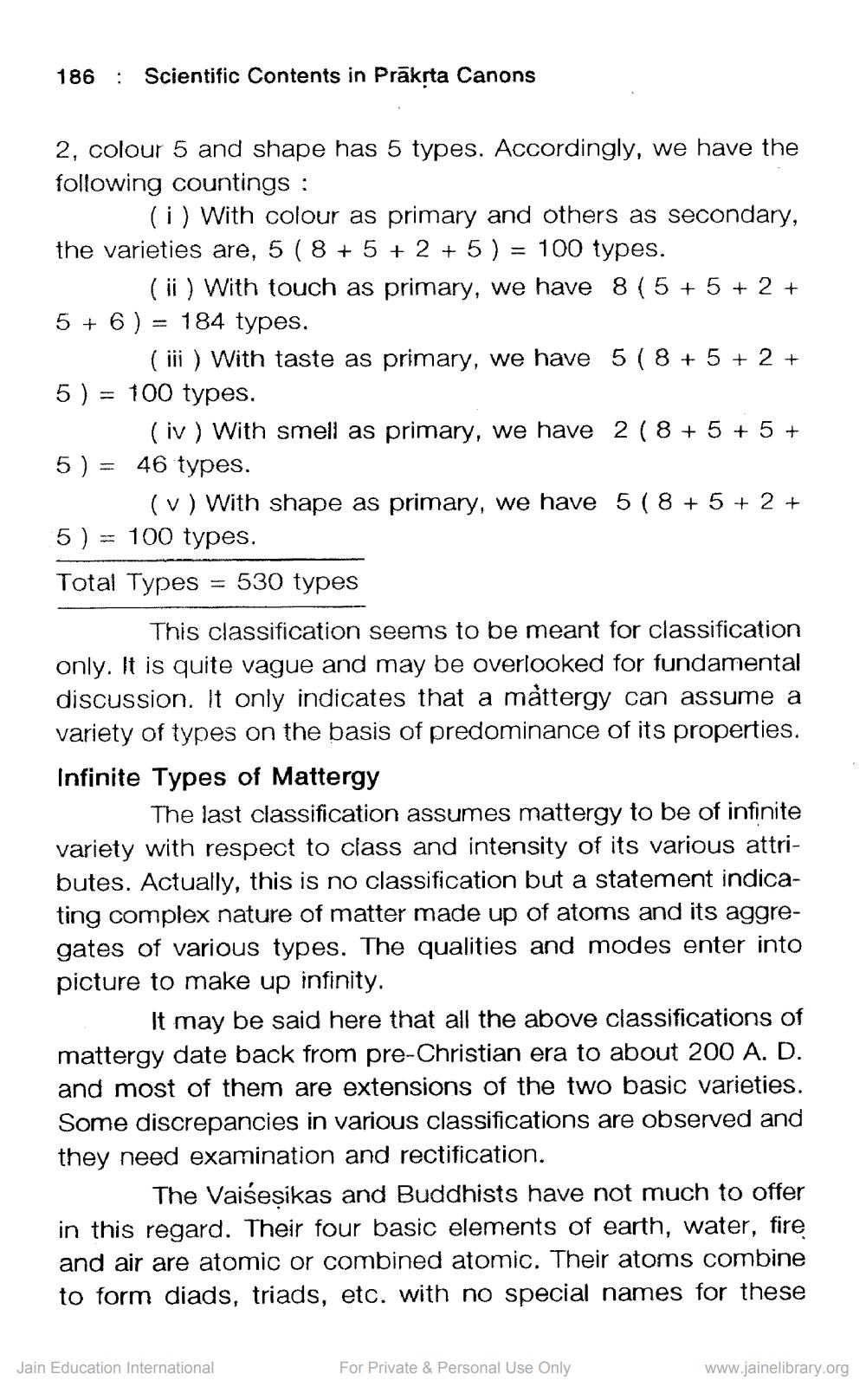________________
186 : Scientific Contents in Prāksta Canons
2, colour 5 and shape has 5 types. Accordingly, we have the following countings :
(i) With colour as primary and others as secondary, the varieties are, 5 ( 8 + 5 + 2 + 5 ) = 100 types.
(ii) With touch as primary, we have 8 (5 + 5 + 2 + 5 + 6 ) = 184 types.
(iii) With taste as primary, we have 5 ( 8 + 5 + 2 + 5 ) = 100 types.
(iv) With smell as primary, we have 2 (8 + 5 + 5 + 5) = 46 types.
(v) With shape as primary, we have 5 ( 8 + 5 + 2 + 5) = 100 types. Total Types = 530 types
This classification seems to be meant for classification only. It is quite vague and may be overlooked for fundamental discussion. It only indicates that a mattergy can assume a variety of types on the basis of predominance of its properties. Infinite Types of Mattergy
The last classification assumes mattergy to be of infinite variety with respect to class and intensity of its various attributes. Actually, this is no classification but a statement indicating complex nature of matter made up of atoms and its aggregates of various types. The qualities and modes enter into picture to make up infinity.
It may be said here that all the above classifications of mattergy date back from pre-Christian era to about 200 A. D. and most of them are extensions of the two basic varieties. Some discrepancies in various classifications are observed and they need examination and rectification.
The Vaiśesikas and Buddhists have not much to offer in this regard. Their four basic elements of earth, water, fire and air are atomic or combined atomic. Their atoms combine to form diads, triads, etc. with no special names for these
Jain Education International
For Private & Personal Use Only
www.jainelibrary.org




